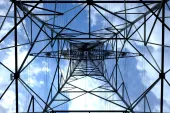South Korea on a power saving drive
South Korea is bracing for an “unprecedented” shortage of power during the winter.
This will force South Korean companies to be more innovative in reducing their electricity consumption.
Some reactors are also expected to resume operation in late January or early February.
Yet experts said additional electricity supply from repaired reactors will not be enough when the nation normally experiences colder weather.
Among methods widely practiced are switching off indoor lights, heating systems and computers during lunch times. Some active advocates have switched on emergency generators in their buildings to reduce reliance on state power supplies and encouraging employees to avoid using elevators and wear long johns.
The state-run power company KEPCO and its affiliates are doing everything they can to ensure stable power supplies. The latest measure it adopted is advancing a noon-1 p.m. launch time by one hour.
The company said it will have its employees eat lunch between 11 a.m. and noon until Feb. 22 so that it can supply more electricity during pre-noon peak time.
The peak power-consumption time before noon is around 10:30-11:30 a.m. since power demand for heating usually spikes up,” a KEPCO official said. “Though the amount of electricity saved by it is small, this reflects the company’s sense of urgency regarding the shortage.”
Seoul City has decided to switch off all lighting in city hall at 7 p.m. on every Wednesday, a measure designed to save power by an estimated 15 percent, officials said. The city government encourages affiliated offices to follow this.
The Federation of Korean Industries is pushing hard for private companies to join the nationwide power-saving campaigns. Early this week, the FKI urged its member companies, including Samsung, Hyundai, SK LG and POSCO, to stop running power-guzzling centralized heating systems during the pre-noon peak time between 9 a.m.-noon and an evening peak time between 5 and 7 p.m.
Starting January, nearly 6,000 companies with daily power consumption of 3,000 kilowatts or more will be mandated to cut their consumption by 10 percent.
For more.



















 Advertise
Advertise







